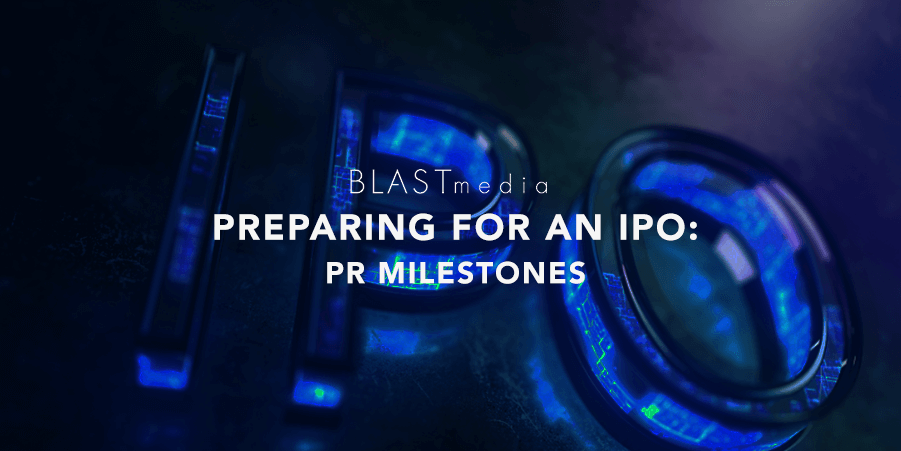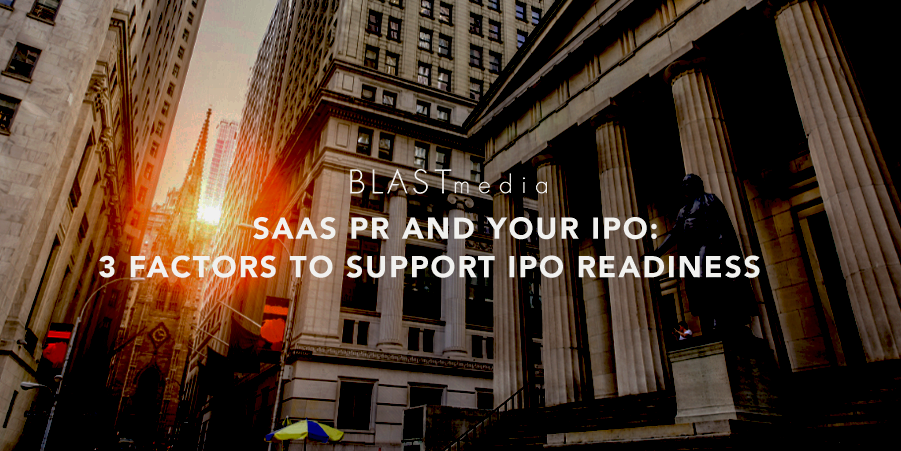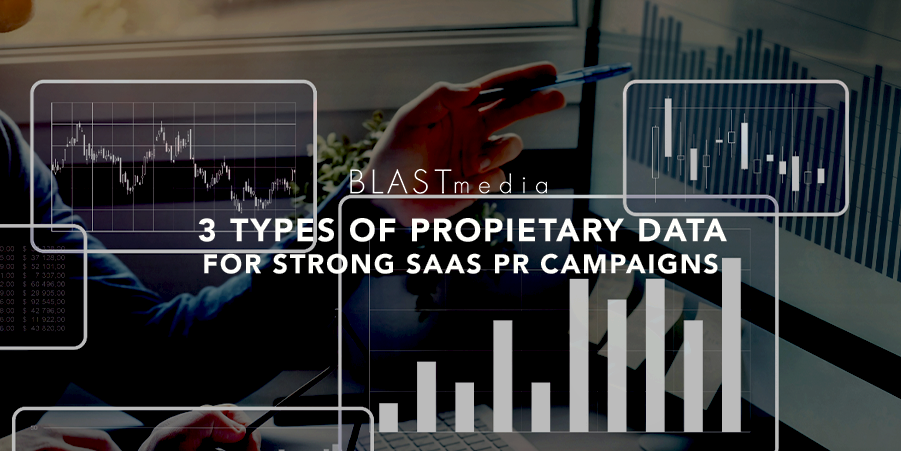As a SaaS PR agency, we’re always seeking to understand what PR strategies work when it comes to securing media coverage and driving value for B2B SaaS brands. By comparing different strategies implemented across the agency, we’re able to generate insights most internal and agency teams aren’t privy to — after all, our team works with over 60 B2B SaaS brands!
Curious what we’ve learned so far this year? Take a look at a few of the insights gleaned by members of our SaaS PR agency team in the first few months of 2021:
Pairing announcements with data and thought leadership helps SaaS companies stand out from the noise.
Coming off a year where M&A deals totaled $634 billion, a 91.8% year-over-year increase, the first quarter of 2021 also marked an all-time high for global funding. It’s an exciting time — but all that excitement also leads to a great deal of noise.
To rise above the chatter, it’s not enough for a SaaS company to simply distribute a press release about funding or a new acquisition.
“Our most successful announcements in Q1 were paired with one of three things: company metrics like YRR, customer number, valuation; data — earned data, like surveys, owned data like platform metrics or industry like TAM; and access to third-party spokespeople supporting our messaging, such as investors or notable customers,” said BLASTmedia Director of Success Meghan Matheny.
For SaaS companies without company metrics, data or outside spokespeople, making the announcement one piece of a larger campaign can also increase visibility.
“We’ve augmented the success of announcements with thought leadership that enforces the key message surrounding the news,” explained BLASTmedia Director of Success Lydia Beechler. “For example, we highlighted how traditional business intelligence has failed enterprises alongside a data report on the benefits of embedded analytics (a new subset of BI).”
Reacting to competitor IPO news provides a way for SaaS brands to join industry-wide conversations.
Nearly 20 B2B SaaS companies IPOed in 2020, and with companies like Qualtrics and DigitalOcean taking their place on the exchange this year, expect SaaS IPOs to make more headlines in 2021.
For companies not aiming or ready to go public, news of IPOs within a given industry presents opportunities for building thought leadership.
“We’ve leveraged IPOs — specifically those that saw significant increases in stock prices after their stock market debut — to highlight the relevance of an industry that a client fits into,” said Lydia. “This not only shows the significance of the IPOing company but tips a hat to the potential others in the market have for growth.”
According to BLASTmedia Director of Success Kelsey Sowder, reacting to IPO news “works especially well when our clients have bold stances on companies IPOing. For example, if a client thinks an IPO is happening just for the company to raise capital or if it won’t actually advance the industry, these stances tend to garner more media interest.”
G2 and other review sites provide a jumping-off point for customer quotes and stories.
Known as the world’s leading B2B software-and-services review platform, G2 is a trusted resource many prospects use to vet software solutions. But it’s also a great SaaS PR tool.
Our team has been harnessing the power of G2’s platform for years as a way to build thought leadership by securing coverage on G2’s Learning, as well as to showcase brand momentum and credibility by leveraging Grid Reports and other G2 rankings.
In 2021, the team has found new ways to leverage the review platform by identifying customer quotes to include in marketing materials like press releases and award submissions.
Beyond pulling quotes, the team also used G2 as a jumping-off point for identifying possible customer advocates willing to speak to the media and customer stories — an essential SaaS PR tool (more on that in point #4).
“We leveraged G2 reviews as a starting point to identify customers that might be willing to speak to media on behalf of a client,” said Lydia. “If they’re willing to say it on G2, they may be willing to say it to The Wall Street Journal!”
Incorporating customer stories into press releases and contributed content provides a new avenue for leveraging an essential SaaS PR tool.
We know that customer stories are an essential tool for SaaS marketers. After all, as PR Director Kayleigh Jones recently shared, “as a B2B SaaS company, your customers are your biggest champions. No one is better positioned to advocate for your solution than the organizations using it every day.”
Meghan agrees. “Customer stories are a key tactic to garner top-tier interest. When beginning work with a new supply chain client, we offered a customer story to Forbes, resulting in coverage (their first piece). Besides giving us the foot in the door with top tier, incorporating use cases (anonymized or not) into quotes and contributed content is a useful way to demonstrate practical application.”
Though some of our clients have customers eager to speak with the press, that isn’t the case for all SaaS brands.
For those new to generating customer stories or dealing with customers who might be hesitant to speak to the press, PR director, Katie Cessna recommends focusing on customer commentary that allows for more touchpoints with the customer to start. “We’ve seen success taking a step-by-step approach with our client’s customers,” explained Katie. “Instead of immediately leveraging them in an interview, we first quoted the customer in a release, scheduled a call to discuss their experience with our client and then used that information to pitch out their story to reporters.”
Kelsey points out integrating a customer story into a piece of contributed content, also known as a byline, is also an option — especially when the customer is concerned with messaging or doesn’t have time to commit to press interviews. “This approach works well because, typically, the information we’re leveraging has already been approved by the customer for use by our clients. And, with bylines, we’re better able to control the message and paint a full picture of the customer’s use case.”
Securing the right coverage to connect with a highly engaged audience might require pursuing opportunities behind a paywall.
More and more, paywalls are becoming part of the typical media landscape. While paywalls can make sharing media coverage challenging and constrict the size of the audience, Meghan says the trade-off is the ability to get in front of a highly engaged audience.
“Many of our clients are embracing the quality of the coverage over the limited eyeballs because it means there is a greater chance of engagement and bringing a prospect into the sales funnel,” said Meghan.
According to BLASTmedia VP Grace Williams, that highly engaged audience can lead to benefits beyond brand awareness: “We’ve seen plenty of clients benefit from coverage behind paywalls. A quick example: After a single contributed piece on Extra Crunch, TechCrunch’s subscription product, our clients are seeing 200-300 referral visits and even a few conversions.”
This is the year to shop around and pursue newswire alternatives.
As part of her year-end SaaS PR predictions, Grace commented that 2021 would be the year “audiences wise up to newswires — kind of.”
“In 2021, marketing and comms leads will start considering the broad spectrum of places outside of a wire we can place releases,” explained Grace. “A company blog or, if you have some extra budget, a paid posting in a trade publication are valid options to consider and can often have the same impact as a newswire posting (minus the syndications).”
Q1 showed us that these services still have their place — when asked, multiple members of our SaaS PR agency described newswires as “useful.” However, a press release on a newswire service isn’t the only (or even the best) way to show a steady cadence of news.
“For clients in niche industries, we’ve recommended using other avenues like Industry Dive’s press release form,” Katie shared. “The Industry Dive sites are improving their capabilities and looking to provide similar services to a wire service. By posting to specific publications, you have a better chance of reaching your target audience based on what that publication covers.”
For SaaS companies looking to stick with a traditional wire service, Katie says there are options. “We’ve started to see clients use other wire services (WebWire, NewswireNext) that are more affordable and get the news out there beyond their site.”
Looking for more SaaS PR insights? Contact Lindsey Groepper to learn more about partnering with our SaaS PR agency.










